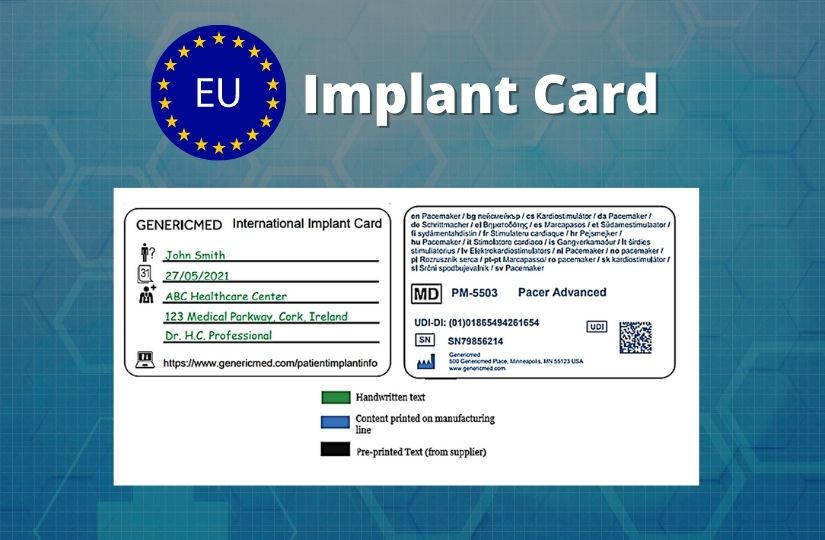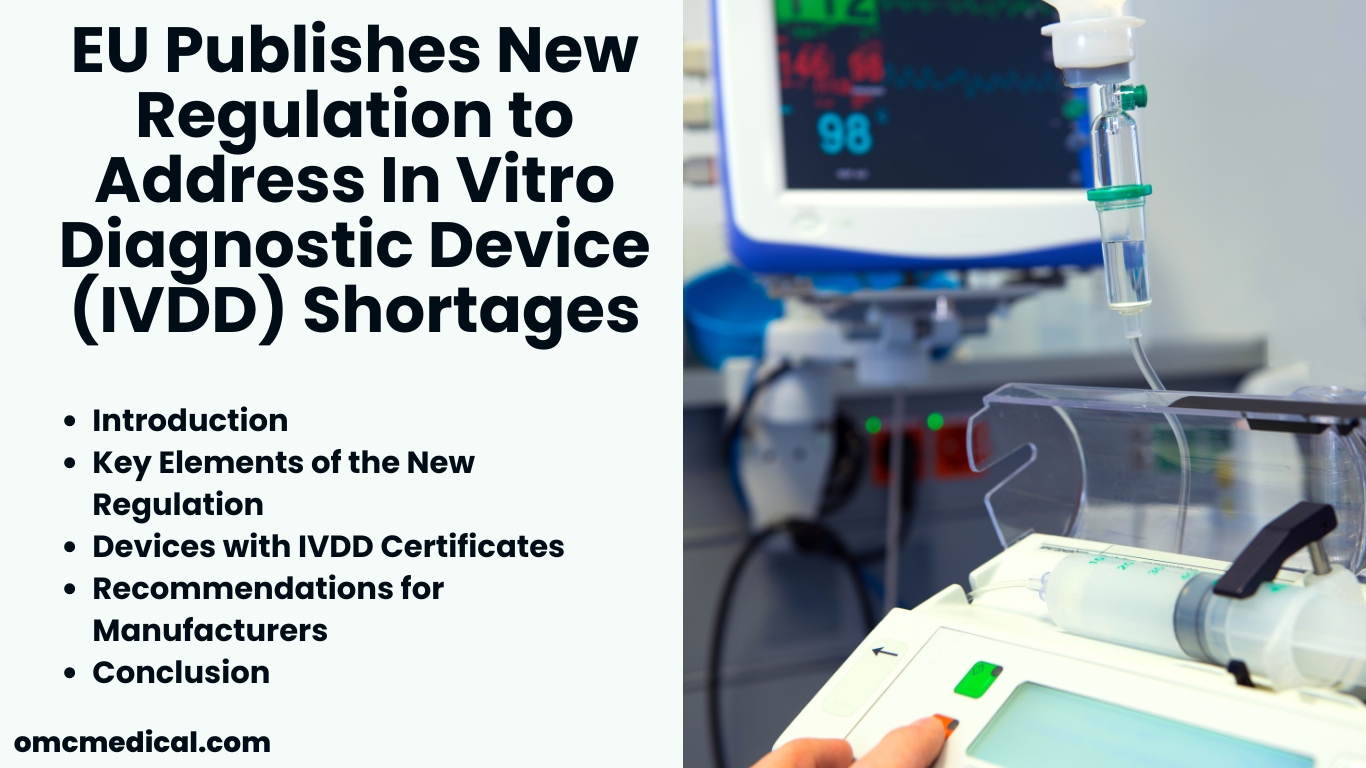The European Union’s Medical Device Regulation (MDR 2017/745) introduces a new requirement for manufacturers producing implant cards for medical devices.
As per EU MDR, implantable devices are any devices, other than the active implantable devices, that are partially or completely implanted into the human body or are used to replace an epithelial surface or the surface of the eye, by clinical intervention, and are meant to stay in place after the procedure.
The device that is intended to be partially implanted into the human body by medical interventions and to remain in place for at least 30 days following the surgery are also considered as an implantable device.
Legal manufacturers must now provide an ‘Implant Cards(IC)’ to patients, which ensures transparency and access to device information with which they have been implanted.
This is done per the regulations mentioned in Article 18 of the EU MDR the information provided in this article is taken from Article 18 of EU MDR and Factsheet for manufacturers of implantable medical devices .
The implant cards will have the following details printed on them:
- Device name
- Device type
- UDI or unique device identification
- Serial /lot or batch number
- Name and address of the manufacturer
- Website of the manufacturer
The manufacturer should design the implant cards in such a way that it includes the following blank fields to be filled out by the implanting healthcare institution or healthcare provider:
- Name of the patient or patient ID
- Date of implantation
- Name and address of the healthcare institution that performed the implantation
The manufacturer should design the implant cards in such a way that it includes the following blank fields to be filled out by the implanting healthcare institution or healthcare provider:
- Name of the patient or patient ID
- Date of implantation
- Name and address of the healthcare institution that performed the implantation
In addition to the above, the following information should be provided to the patient bearing the implant:
- Any warnings, precautions, or measures that the patient or a healthcare practitioner should take in the event of reciprocal contact with external influences, medical exams, or environmental factors that are reasonably predictable
- Information on the device’s projected lifetime, and any necessary follow-up
- Any other information to ensure safe use of the device by the patient
- Device’s overall qualitative and quantitative information on the materials and substances to which patients can be exposed
All information shall be updated whenever required, and the updates should be conveyed to the patient via the manufacturer’s website. The basic shape of the IC shall be designed in compliance with ISO/IEC 7810 ID-1 (credit card form).
2 Example for Individual Device Implant Cards (ICs)
The symbols used already exist in the ISO standards and hence widely accepted. The following picture provides an example for individual device implant cards (ICs).

The table below provides explanation of the symbols used on an IC.MDCG 2019-8 v2 guidance for implant card (IC)

FAQs
What is the Purpose of an Implant Card?
Implant cards aims to achieve three main objectives:
- Enable the patient to identify the medical devices and to get access to vital information regarding the implant (access to EUDAMED, and other resources)
- Enable patients to identify themselves as persons requiring special care in relevant situations like security checks
- Enabling emergency clinical staff or first responders to be informed about special care/needs for relevant patients in case of emergencies
Do all devices require an implant card?
No, some devices are exempted from this requirement. Article 18 requirements apply only to devices placed on the market under Regulation (EU) 2017/745.
Furthermore, devices already placed on the market under Directive 90/385/EEC or Directive 93/42/EC do not need an IC.
The following implants shall be exempted from the obligations laid down in Article 18 of EU MDR 2017/745: sutures, staples, dental fillings, dental braces, tooth crowns, screws, wedges, plates, wires, pins, clips, and connectors.
The Commission is empowered to adopt delegated acts in accordance with Article 115 of EU MDR to amend this list by adding other types of implants to it or by removing implants therefrom.
What are the language requirements for Europe?
It is necessary that the information on the IC must be provided in the language accepted/required by the concerned Member State within the EU.
There are several possibilities available to provide this information in the necessary languages, e.g., the information is already printed on the IC in the different languages or stickers are provided with the IC and the healthcare professional selects the right one etc.
More information can be found in MDCG guidance document on Implant Card requirements
Can the UDI Carrier on the IC be machine readable?
The UDI is a series of numeric or alphanumeric characters that is created through a globally accepted device identification and coding standard. It allows the unambiguous identification of a specific device on the market.
The UDI is comprised of the device identifier (UDI-DI) and the production identifier (UDI-PI). The UDI Carrier (the representation of the UDI) is to be included on the IC in automatic identification and data capture (AIDC) format, e.g., linear or 2D-Barcodes, and the IC must include the UDI-DI in human-readable format.
Source: Factsheet for manufacturers of implantable medical devices .
Does the IC need to include both UDI-DI and UDI-PI?
Yes, both the UDI-DI and UDI-PI must be on the implant card.











